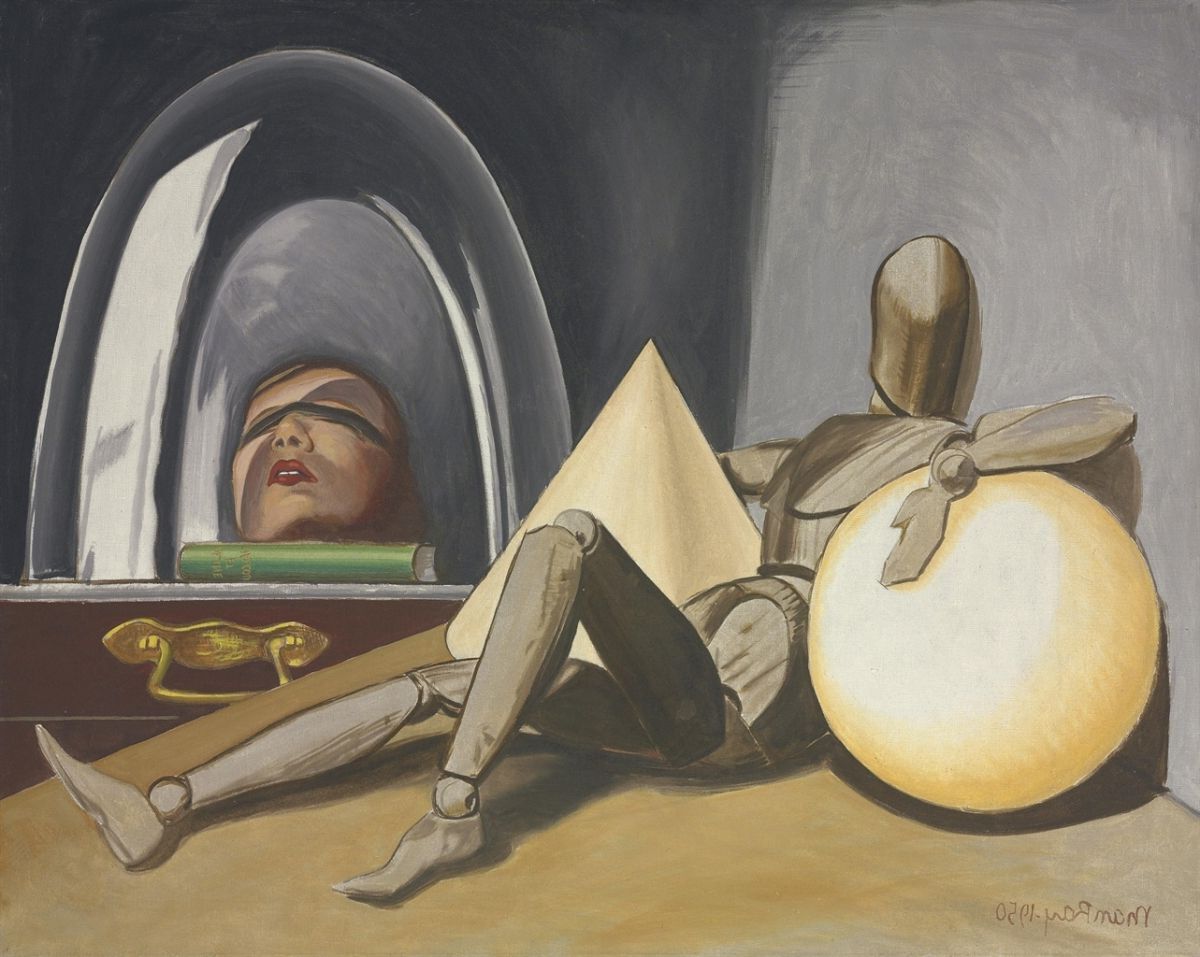
Stendhal Syndrome is a fascinating phenomenon where individuals experience intense emotional reactions, including dizziness, rapid heartbeat, and even hallucinations, when exposed to art. Named after the 19th-century French writer Stendhal, who described his own overwhelming experience in Florence, this condition highlights the profound impact art can have on the human psyche. Imagine standing before a masterpiece and feeling so moved that your body reacts physically! This syndrome is rare but offers a unique glimpse into the powerful connection between art and emotion. Ready to dive into 50 intriguing facts about this captivating condition? Let's get started!
Key Takeaways:
- Stendhal Syndrome is a real condition where people feel overwhelmed by art, experiencing physical and emotional symptoms. It's named after a French writer and has historical, psychological, and cultural factors.
- Stendhal Syndrome can cause rapid heartbeat, dizziness, and even hallucinations in response to art. Treatment involves rest, hydration, and stress reduction techniques, and it continues to intrigue both the medical and artistic communities.
What is Stendhal Syndrome?
Stendhal Syndrome, also known as Florence Syndrome, is a psychosomatic condition. It occurs when individuals experience overwhelming emotions in response to art. Named after the 19th-century French author Stendhal, who described his own experiences in Florence, this syndrome can cause various physical and emotional symptoms.
- Stendhal Syndrome was first identified in 1979 by Italian psychiatrist Graziella Magherini.
- The syndrome is named after the French writer Stendhal, who described his own intense reactions to art in his book "Naples and Florence: A Journey from Milan to Reggio."
- Symptoms can include rapid heartbeat, dizziness, fainting, confusion, and even hallucinations.
- The condition is most commonly reported in Florence, Italy, home to many Renaissance masterpieces.
- Stendhal Syndrome is considered a psychosomatic disorder, meaning it involves both mind and body.
Historical Background
Understanding the historical context of Stendhal Syndrome helps to appreciate its significance. The syndrome's roots trace back to the experiences of travelers and art lovers in the 19th century.
- Stendhal first experienced the syndrome in 1817 during a visit to Florence's Basilica of Santa Croce.
- He described feeling overwhelmed by the beauty of the artwork and architecture, leading to physical symptoms.
- The syndrome gained wider recognition after Magherini published her book "La Sindrome di Stendhal" in 1989.
- Magherini documented over 100 cases of tourists experiencing similar symptoms in Florence.
- The term "Stendhal Syndrome" became widely accepted in the medical community after her research.
Symptoms and Diagnosis
Recognizing the symptoms of Stendhal Syndrome is crucial for proper diagnosis. The condition can manifest in various ways, affecting both physical and mental health.
- Common symptoms include palpitations, chest pain, and shortness of breath.
- Emotional symptoms can range from intense joy to profound sadness.
- Some individuals may experience disorientation or a sense of unreality.
- Hallucinations, though rare, have been reported in severe cases.
- Diagnosis typically involves ruling out other medical conditions and considering the patient's recent exposure to art.
Psychological and Cultural Factors
Several psychological and cultural factors contribute to the development of Stendhal Syndrome. Understanding these can help in managing and preventing the condition.
- Individuals with a strong emotional connection to art are more susceptible.
- Cultural background and personal experiences can influence the intensity of the reaction.
- The syndrome is more common among people who are highly sensitive or empathetic.
- Stress and fatigue from travel can exacerbate symptoms.
- The immersive experience of viewing art in person, as opposed to digitally, plays a significant role.
Famous Cases
Several well-documented cases of Stendhal Syndrome highlight its impact on individuals. These cases provide insight into the condition's effects and the variety of experiences people have had.
- French writer Stendhal's own account remains one of the most famous cases.
- In 2018, a 70-year-old man fainted while viewing Botticelli's "The Birth of Venus" in Florence.
- A Japanese tourist experienced severe dizziness and had to be hospitalized after visiting the Uffizi Gallery.
- An American art student reported hallucinations after spending hours in the Louvre.
- Italian psychiatrist Graziella Magherini's book includes numerous case studies from her research.
Treatment and Management
Managing Stendhal Syndrome involves both immediate and long-term strategies. Proper treatment can help alleviate symptoms and prevent recurrence.
- Immediate treatment may include rest, hydration, and removal from the triggering environment.
- In severe cases, medical intervention such as medication may be necessary.
- Long-term management focuses on stress reduction and emotional regulation techniques.
- Cognitive-behavioral therapy (CBT) can help individuals cope with their reactions to art.
- Educating travelers about the syndrome can aid in early recognition and prevention.
Controversies and Criticisms
Stendhal Syndrome has faced skepticism and criticism within the medical community. Some experts question its validity and the methods used to study it.
- Critics argue that the syndrome lacks a clear diagnostic criteria.
- Some believe that the symptoms are simply a result of travel fatigue and stress.
- The rarity of the condition makes it difficult to study and validate.
- Others suggest that the syndrome is a cultural phenomenon rather than a medical condition.
- Despite criticisms, many experts acknowledge the profound impact art can have on individuals.
Modern Perspectives
Modern research and perspectives on Stendhal Syndrome continue to evolve. New studies and theories offer fresh insights into this fascinating condition.
- Recent studies explore the neurological basis of the syndrome, examining brain activity in response to art.
- Advances in imaging technology allow for more detailed analysis of the brain's reaction to aesthetic experiences.
- Some researchers are investigating the role of mirror neurons in empathy and emotional responses to art.
- The rise of virtual reality (VR) art experiences presents new opportunities to study the syndrome in controlled environments.
- Ongoing research aims to develop better diagnostic tools and treatment options.
Cultural Impact
Stendhal Syndrome has left a lasting impact on both the art world and popular culture. Its influence can be seen in various forms of media and artistic expression.
- The syndrome has been referenced in literature, film, and television.
- Artists have created works inspired by their own experiences with Stendhal Syndrome.
- Museums and galleries sometimes provide information about the syndrome to visitors.
- The condition has sparked discussions about the power of art and its effects on the human psyche.
- Stendhal Syndrome continues to intrigue and inspire both artists and art lovers.
Interesting Facts
Here are some additional interesting facts about Stendhal Syndrome that highlight its unique nature and widespread fascination.
- The syndrome is not limited to visual art; it can also occur in response to music, literature, and other forms of artistic expression.
- Some people experience Stendhal Syndrome multiple times, while others may only have one episode.
- The condition is more commonly reported in women than men.
- Stendhal Syndrome has been observed in people of all ages, from teenagers to the elderly.
- Despite its rarity, the syndrome remains a topic of interest and research in both the medical and artistic communities.
The Final Word on Stendhal Syndrome
Stendhal Syndrome, a fascinating psychological phenomenon, leaves people overwhelmed by art's beauty. Named after the 19th-century French writer Stendhal, who experienced it firsthand, this condition can cause dizziness, rapid heartbeat, and even fainting. While rare, it highlights the profound impact art can have on the human mind.
Understanding Stendhal Syndrome reminds us of art's power to evoke deep emotions. Whether you're an art lover or just curious, knowing about this syndrome adds another layer to appreciating masterpieces. Next time you visit a museum or gallery, take a moment to reflect on how art affects you.
Stendhal Syndrome may be rare, but its existence underscores the incredible connection between art and human experience. So, keep exploring, keep feeling, and let art continue to move you in unexpected ways.
Frequently Asked Questions
Was this page helpful?
Our commitment to delivering trustworthy and engaging content is at the heart of what we do. Each fact on our site is contributed by real users like you, bringing a wealth of diverse insights and information. To ensure the highest standards of accuracy and reliability, our dedicated editors meticulously review each submission. This process guarantees that the facts we share are not only fascinating but also credible. Trust in our commitment to quality and authenticity as you explore and learn with us.


